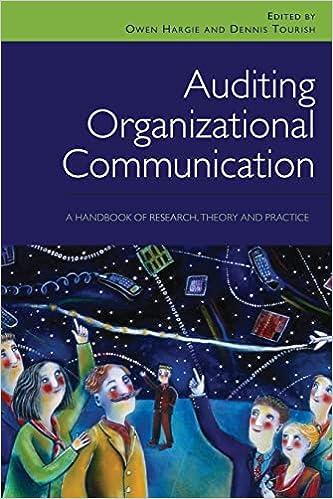Answered step by step
Verified Expert Solution
Question
1 Approved Answer
MATLAB page 188 MATLAB from page 173: Only Question 2 please Question 1. [10 points] This BJT broadband amplifier is going to be converted into

MATLAB page 188


MATLAB from page 173:


Only Question 2 please
Question 1. [10 points] This BJT broadband amplifier is going to be converted into a narrow band tuned amplifier. The BJT is a 2N2904 with the following characteristics: he = 200, Poz: =1000. He = 10 0?. Hos = 10-0"!. Cje = 2 pF and f1 = 300MHz. This amplifier operates from a power supply of 20 volts and receives its input signal from a single source with an output resistance of 50 ohms. Vcc 6.8K 330K IC + 15nF + I. - 6.8uF 39K 1 Meg 2. Vi 1.2K 12uF Check the value of the Q-point collector current then check the expression for the voltage gain and plot the frequency response with the MATLAB code on page 173. Use reasonable common sense assumptions. Question 2. [10 points] The LC tuned load consists of a toroidal inductance of value 4.6 uH and a tuning capacitance of 54.5 pF. The Q of the LC load is found by the method discussed in Fig. 5- 49 and found to be 24. Calculate the parasitic resistance of the tuned load and its frequency bandwidth (BW). Then plot the magnitude of the tuned parallel LCR network using the MATLAB code given on page 188. Declare tuned network component values. RL=10000 sohms L=4e-6 henries C=60e-12 %farads Define frequency range fL=1e6 Low frequency limit fH=128 High frequency limit Define frequency range fratio=fH/EL N=100+log10 (fratio) +1 Calculate impedance values: for n=1:N f(n) =fL*10.^(0.01* (n-1)); z (n) = (2i) *pi*L*RL. *f(n)./ (((21) *pi. *f(n)).^2*L*C*RL+ (2i) *pi. *f(n) *L+RL) % Calculate impedance magnitude: magz (n) =abs (z (n)); end Plot impedance magnitude: semilogx (f, magz, 'k') %Label the plot xlabel('linear frequency'),ylabel ('magz') title('Impedance magnitude of parallel tuned network') Declare load resistance and signal source resistance in ohms. RL=10000 %Load resistance RS=1000%Source resistance IC=1.0 %mA hfe=150%BJT Beta % Calculate the BJT parameters. transconductance: gm=IC/26 %dynamic CE base-emitter resistance: rbe-hfe/gm %set base spreading resistance: rbb=100 fset Cbe: Cbe=100e-12 fset Cbc: Cbc=2e-12 Define frequency range fL-le3 Low frequency limit fH=1e9 High frequency limit fratio=fH/EL N=100*log10 (fratio)+1 % Calculate voltage gain values: for n=1:N f(n) =fL*10^(0.01* (n-1)); Av(n) =- (1/(RS+rbb) ) *RL* (gm-((2i) *pi*f(n) * Cbc))/(- (2*pi*f(n))^2*Cbe* Cbc*RL... +((2i) *pi*f (n) * (Cbe+CbC+Cbc* (gm+1/rbe+1/(RS+rbb)))... +1/ (RS+rbb) +1/rbe)); % Calculate dB gain: dBAv (n) =20*log10 (abs (Av (n))); end Plot absolute gain semilogx (f, dBAV, 'k') Label the plot xlabel('linear frequency'), ylabel('201og Avl') title('Bode plot of voltage gain of CE amplifier-complete') Question 1. [10 points] This BJT broadband amplifier is going to be converted into a narrow band tuned amplifier. The BJT is a 2N2904 with the following characteristics: he = 200, Poz: =1000. He = 10 0?. Hos = 10-0"!. Cje = 2 pF and f1 = 300MHz. This amplifier operates from a power supply of 20 volts and receives its input signal from a single source with an output resistance of 50 ohms. Vcc 6.8K 330K IC + 15nF + I. - 6.8uF 39K 1 Meg 2. Vi 1.2K 12uF Check the value of the Q-point collector current then check the expression for the voltage gain and plot the frequency response with the MATLAB code on page 173. Use reasonable common sense assumptions. Question 2. [10 points] The LC tuned load consists of a toroidal inductance of value 4.6 uH and a tuning capacitance of 54.5 pF. The Q of the LC load is found by the method discussed in Fig. 5- 49 and found to be 24. Calculate the parasitic resistance of the tuned load and its frequency bandwidth (BW). Then plot the magnitude of the tuned parallel LCR network using the MATLAB code given on page 188. Declare tuned network component values. RL=10000 sohms L=4e-6 henries C=60e-12 %farads Define frequency range fL=1e6 Low frequency limit fH=128 High frequency limit Define frequency range fratio=fH/EL N=100+log10 (fratio) +1 Calculate impedance values: for n=1:N f(n) =fL*10.^(0.01* (n-1)); z (n) = (2i) *pi*L*RL. *f(n)./ (((21) *pi. *f(n)).^2*L*C*RL+ (2i) *pi. *f(n) *L+RL) % Calculate impedance magnitude: magz (n) =abs (z (n)); end Plot impedance magnitude: semilogx (f, magz, 'k') %Label the plot xlabel('linear frequency'),ylabel ('magz') title('Impedance magnitude of parallel tuned network') Declare load resistance and signal source resistance in ohms. RL=10000 %Load resistance RS=1000%Source resistance IC=1.0 %mA hfe=150%BJT Beta % Calculate the BJT parameters. transconductance: gm=IC/26 %dynamic CE base-emitter resistance: rbe-hfe/gm %set base spreading resistance: rbb=100 fset Cbe: Cbe=100e-12 fset Cbc: Cbc=2e-12 Define frequency range fL-le3 Low frequency limit fH=1e9 High frequency limit fratio=fH/EL N=100*log10 (fratio)+1 % Calculate voltage gain values: for n=1:N f(n) =fL*10^(0.01* (n-1)); Av(n) =- (1/(RS+rbb) ) *RL* (gm-((2i) *pi*f(n) * Cbc))/(- (2*pi*f(n))^2*Cbe* Cbc*RL... +((2i) *pi*f (n) * (Cbe+CbC+Cbc* (gm+1/rbe+1/(RS+rbb)))... +1/ (RS+rbb) +1/rbe)); % Calculate dB gain: dBAv (n) =20*log10 (abs (Av (n))); end Plot absolute gain semilogx (f, dBAV, 'k') Label the plot xlabel('linear frequency'), ylabel('201og Avl') title('Bode plot of voltage gain of CE amplifier-complete')Step by Step Solution
There are 3 Steps involved in it
Step: 1

Get Instant Access to Expert-Tailored Solutions
See step-by-step solutions with expert insights and AI powered tools for academic success
Step: 2

Step: 3

Ace Your Homework with AI
Get the answers you need in no time with our AI-driven, step-by-step assistance
Get Started


